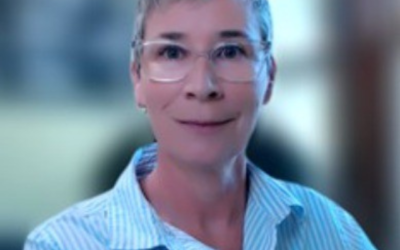Immigrant Families Face Cold, Streets
We’re tackling the needs of newly arriving immigrant and refugee families with 24/7 care and support.
Here are our successful approaches and proven solutions.
Nine-year-old Bette beamed as she tried on her first winter jacket. Her eyes widened as she slid the zipper up and down, and she shrieked in delight as she pulled the hood snugly over her head. She turned towards her mother, Amelia, who gently smiled and signaled Bette to spin. As she pirouetted, however, something flew off her foot and sailed across the hotel lobby.
The sight of the thin, rubber flip-flop in flight elicited giggles. But it also served as a harsh reminder about something that is no laughing matter: the humanitarian crisis that has resulted in an increasing number of Haitian families like Bette’s arriving to Boston with nothing more than the clothes on their backs. For Bette, her six-year-old brother, Daniel, and Amelia, our city was their last destination in an arduous two-year journey from Haiti to Colombia, then Mexico, and finally Texas, where they were permitted legally into our country. After several months in a cavernous resettlement center, an unscrupulous local lured them out of the town with a one-way bus ticket to Boston and a false promise of a job and housing. They arrived in Boston in the middle of a recent, frigid night with no one to greet them and nowhere to go.
For more than a year, FamilyAid has been stepping up and stepping in to help refugee, asylum-seeking, and migrant families gain respite from a mounting catastrophe that – with existing resources alone – cannot be brought under control.
“Children and families are arriving from warm-weather countries every day with nothing more than what they’re wearing when they step off the bus,” FamilyAid president Larry Seamans said. “For years, one or two families every week would seek temporary shelter at Boston Medical Center’s emergency room. But because of the pandemic, the economy, and global instability, it’s now five or six families every night. Children and parents are here now, seeking our help.”
With support from private foundations and the City of Boston, FamilyAid has gathered more than 300 children and parents from BMC’s emergency room since July, providing them warm clothes, hot meals, safe beds, and yes, boots, as they await acceptance into the state’s overburdened shelter system. More arrive each day. Persistent political strife and violence continue to force many Haitian families, such as Bette’s, to flee their homeland and start anew in cities where friends or distant relatives have previously relocated.
In meeting its obligations under United Nations protocols and federal law to help those fleeing violence and abuse, the United States and our border states have been stressed. In turn, the natural migration of eligible asylum seekers to the diaspora from their home countries is stressing systems in Greater Boston.
Like her predecessor, Massachusetts Gov. Maura Healey is imploring the Legislature to use a portion of Massachusetts’ significant surplus to shore up the family emergency shelter system as a front line to help a rising number of both resident and immigrant families who are falling into homelessness.
While shoring up the system will help the current situation, Seamans says a pragmatic, longer-term three-step approach is needed: 1) fix the entry into emergency shelter, 2) expand shelter capacity and 3) speed up families’ exit from shelter.
First and foremost, there is an urgent need to fix the front-of-system process by having an intake center that takes the pressure off hospitals and charitable organizations.
“Our hospital emergency rooms are already overwhelmed and not meant to shelter children and parents,” Seamans said. “We need a 24/7 family-friendly and family-oriented center that provides a safe, secure way to welcome children and their parents.”
Families currently find themselves stuck or cycling from hospitals to police stations to hotels to a state intake office and, often, back to the hospital and hotels. A child-and trauma-centric center is needed to immediately and appropriately welcome families and help set them up with shelter, food, and other resource benefits.
The next step is tied to Gov. Healey’s plan to increase shelter capacity equitably and sustainably. FamilyAid has added 12 new shelter units in the last year to its portfolio – now totaling more than 135 – and is seeking more appropriate ones to best address families’ trauma.
The third and final stage is expanding proven housing pathways to help families exit shelters and quickly get back up on their feet. Currently, asylum seekers and immigrants awaiting clearance to work (about a 2-year process) and establish residency (a 4-year process) have few or no federal/public housing options. The Massachusetts Rental Voucher Program (MRVP) – which provides extremely low-income families with state-funded rental subsidies – can be expanded to provide more families – especially those not eligible yet for federal housing – a clear path out of shelter.
For now, however, the brunt of helping just-arrived families continues to fall on organizations like FamilyAid and its supporters. That’s why FamilyAid is asking supporters to donate and advocate to meet families’ immediate needs and address the crisis long-term.
“For more than 100 years, FamilyAid has helped children and parents find a better life in a city built by immigrants,” said Seamans. “A century later, we can and must do more and better to help the most vulnerable of our neighbors.”



